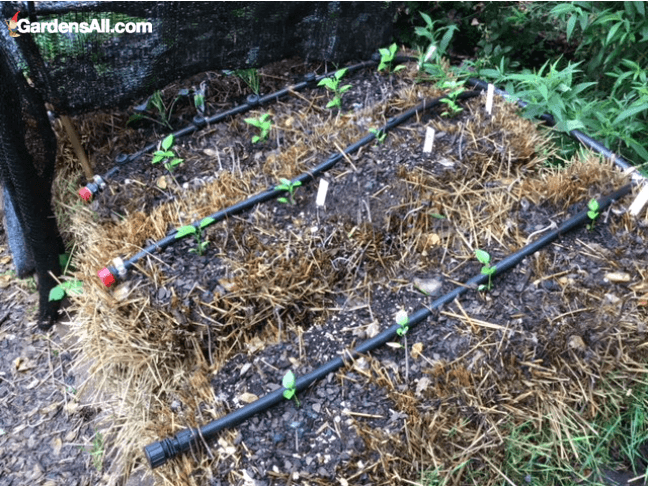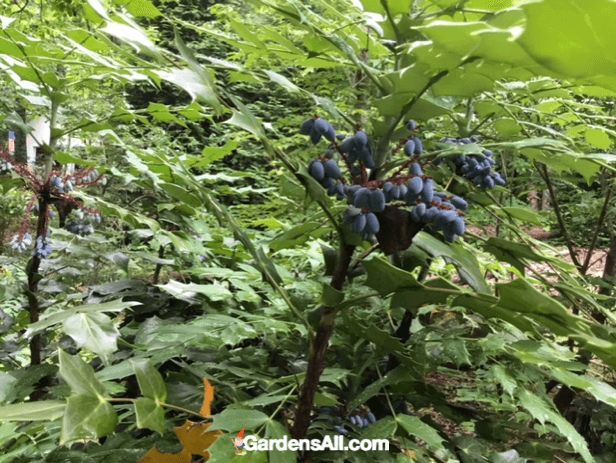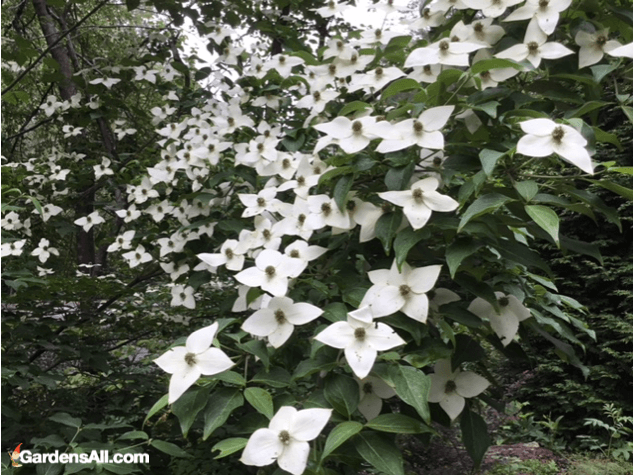The prior two weeks had been bone dry. So, like any mindful gardener, I put in an order for rain. And it poured more than 6 inches this week with still more on it’s way over the next week! We got in some transplants in spite of the intermittent deluges. It’s always good to plant just before a rain when you can. Just watch out for those downpours!
Years of observation have led to the conclusion that there’s something in natural rainfall, apart from the quantity and coverage, that enhances garden life. It’s clear that our potted plants love it too. They’ve only been outside about a week now, and they’re lush and thriving. It turns out that the rainwater has a slightly acidic pH which helps to balance out the extra alkalinity of treated tap water and grey water. We suspect there’s even more to it than that, but can’t prove it. ? [1]https://www.ecolandscaping.org/08/ecological-landscaping-101/rainwater-for-gardens-why-plants-love-rainwater-best/
This week, we finished transplanting the tomatoes. The remaining seedlings were potted up for use at our “remote” garden and also to sell at the local farmer’s market. We also set in our peppers: Marconi, Quadrato, Emerald Giant (all sweet), Buena Mulata, and Pepper Fish (hottish).

Infused with rain power, all of the garden has taken off! The squash, the tomatoes, and the beans. The pallet garden is doing quite well; we just had to cover the spinach and chard to keep them from getting too hot. If you want to read more about our pallet garden experiment we wrote about it here.

This week, we’ve been entertaining a visitor in the garden. An Eastern Box Turtle has been roaming in a very slow circle from day to day. She (we checked) might even be looking to lay eggs somewhere. We so appreciate having this visitor, as these terrapins eat many garden pests, like slugs and grubs. If she hangs around, she’ll likely get a name.

Edible Landscape Plants
Mahonia – a.k.a. Oregon Grape Plant
Over the years, we’ve planted trees and shrubs that offer both beauty and edibility. Two examples in our yard are showing off this week. The Oregon Grape Holly, a.k.a. Leatherleaf Mahonia, (Mahonia bealei) has edible berries that we enjoy. They’re slightly tart with a hint of sweetness and a refreshing boost of vitamin C.
IF you can share them with the birds! Last season a swarm of birds swooped in and demolished the entire abundant crop in minutes. We didn’t shoo them away because we were glad to share, but man… we did NOT expect to lose them all.
The mahonia berries are looking good so far this season, though still not as abundant as before the ravaging. but we’ll have to be on the lookout and perhaps get a bush cover as they get closer to ripe. This photo was from a previous year. Currently they’re still mostly green and just beginning to turn.

Kousa Dogwood Tree and Berries
The Kousa dogwood (Cornus Kousa var “Milkyway”) is known for its late blooming habit and ornamental fruits. It’s “cousin” the Cornelian Cherry dogwood also sports smaller fruits. The fruits of each are not the usual taste or texture found at the produce stand. You would likely not make a pie of either of them. Yet, as a “free” and nutritious snack to share with the birds, they’re good to have on hand for garden nibblies, a.k.a. vitamins from nature.

The Kousa Dogwood Flower
The Kousa Dogwood Flower – these flower later than wild dogwoods and are a wonderful landscape feature.

All for now, folks. We look forward to hearing about your week and what’s going on in your little slice of garden paradise. Email us or share on our Facebook Page!
May your garden flourish and your harvest be bountiful!
~ Coleman for GardensAll

G. Coleman Alderson is an entrepreneur, land manager, investor, gardener, and author of the novel, Mountain Whispers: Days Without Sun. Coleman holds an MS from Penn State where his thesis centered on horticulture, park planning, design, and maintenance. He’s a member of the Phi Kappa Phi Honor Society and a licensed building contractor for 27 years. “But nothing surpasses my 40 years of lessons from the field and garden. And in the garden, as in life, it’s always interesting because those lessons never end!” Coleman Alderson
References

